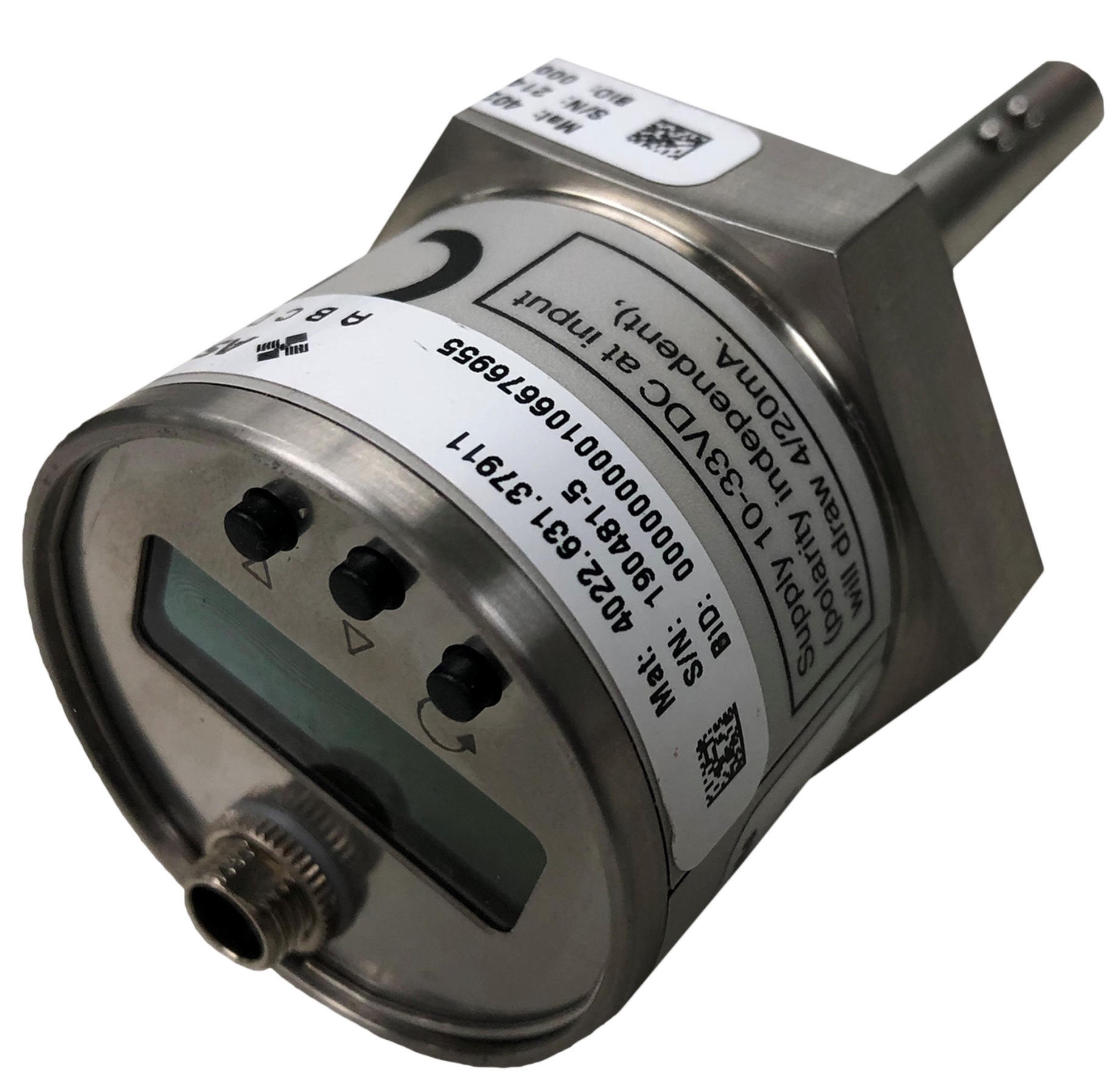The 8800 Series Moisture Analyzer utilizes advanced aluminum oxide (Al₂O₃) sensing technology to accurately detect trace moisture levels, whether on a continuous basis or through spot checks. All Al₂O₃ sensors operate on a common principle: the capacitance measured between the sensor’s aluminum core and the gold film on the oxide layer varies with water content. What sets the 8800 Series apart is its innovative Hyper Thin Film (HTF) technology, which introduces three key structural enhancements to the Al₂O₃ sensor design. These improvements result in increased sensitivity, enhanced stability, and faster response times, making the 8800 Series the optimal choice for precise moisture detection compared to traditional aluminum oxide sensors available on the market today.
- Brand
- DETAILS
- FEATURES
- SPECIFICATION
Brand
Teledyne Analytical TAI
DETAILS
Barrier Layer
In HTF sensors, the transition between the aluminum oxide and the aluminum core is sharp and clearly defined. This inner barrier layer produces a capacitor with its electrodes very close together, which, in turn, leads to the sensor’s high wet to dry capacitance ratio. The benefit of this high ratio is that drift in capacitance, due to undesirable factors, is much less significant. This is clearly a benefit when comparing HTF versus conventional sensors where temperature sensitivity and aging drift are concerned. An added benefit associated with this sharp transition in the barrier layer is a reduction in metal migration, one of the major causes of aging drift in conventional sensors.
Hyper Thin Film (HTF) Layer
The thinner oxide layer of the HTF sensor results in higher capacitance changes (stronger signal generated than conventional sensors) because capacitance is inversely proportional to the distance of the capacitors’ plates from each other (the distance between the aluminum core and the gold film deposited on the oxide layer). The thinner layer also means water molecules will travel faster in and out of the sensor pores, therefore responding several times faster than conventional sensors.
Pore Geometry
The most significant difference between HTF and conventional sensors in their pore geometry. While conventional sensors rely on hygroscopic Al2O3 structures to attract water, the HTF sensors instead rely on a pore geometry that slows the Brownian motion of the water molecules entering the pores. The HTF sensor design results in more dielectric in the pores and consequently a higher capacitance. An added benefit is derived from the fact that HTF pore geometry does not significantly change over time. Conventional Al2O3 structures, however, are not stable and collapse slowly into non-hygroscopic structures. As a result, conventional sensors are subject to higher drift rates and require frequent re-calibration.
Pressure Correction Function
The moisture readings are typically displayed at sensor pressure (atmospheric). Alternatively, the operator can display the readings at the line pressure by selecting and setting the Pressure Correct Mode key. Readings are typically read on a dew point basis in °C or °F. For readout on a ppm basis, the operator must control/know the line pressure and program this value into the controller via the pressure correct function.
Common Electronics Platform
Each unit uses a state-of-the-art microprocessor offering advanced intelligent features. In genera, the MODE button navigates through different user options; the UP and DOWN buttons modify the units, values or choices in the selected mode; and Pressure Correct button is used to either abort out of a mode or to activate the pressure correction function of the instrument. Most versions offer the common options of two adjustable alarms, an isolated 0-24 mA or 4-20 mA output or RS-232 serial interface. The instrument also has an indication for sensor open, short or electronic system failure to quickly alert the operator to a possible malfunction situation. In addition, most versions offer extensive self-diagnostic features that are performed at both start-up as well as once every two minutes.
Sensor Installation Considerations
Proper sample handling is crucial to maintaining the tight moisture control demanded by the industry today. Operators can assist in achieving a successful dew point measurement by:
- Mounting the sensor as close to the measurement point as possible
- Mounting the instrument as close to the measurement point as practical
Leakage, pressure/temperature gradients and moisture absorption/desorption characteristics also need to be taken into careful consideration when designing the appropriate sample system for dew point analysis. Ideally a minimum number of joints/fittings and other plumbing upstream of the Al2O3 sensor should be maintained to reduce the number of locations where moisture could collect or a leak could form.
Options
The 8800 Series Single Point Trace Moisture Analyzers are provided in four compact, reliable designed with the ability to detect moisture from -148°F (-100°C) to ambient dew point levels of +68°F (+20°C) on either a continuous or spot checking basis.
- 8800A – Flush Mount DIN enclosure with connections made via a pluggable screw terminal block
- 8800B – Wall Mount N4X (IP65) enclosure with connections made with 3 bottom watertight fittings
- 8800P – Portable battery operated design in the Standard, I/O and I/S versions (I/S is suitable for hazardous areas)
- 8800T – Low-cost, loop powered 4-20 mA transmitter design with built-in LCD display
FEATURES
- Readout available in (5) engineering units, Deg C, Deg F, ppm, lbs. H2O/mm scf & g H2O/m3
- Analog output: 4-20 mADC
- Alarms: 4-20 mA output signal can be used by an external device (DCS) to drive customer supplied relays
- Built-in LCD, 3.5 digits, and custom legends for units/mode
- (3) Push button controls, all settings stored in EEPROM
- Power requirements: 10-33 VDC, the unit draws 4-20 mA depending on measured value
- High capacitance Aluminum Oxide (Al2O3) sensor using Hyper Thin Film (HTF)™ technology
- Sensor and sensor fitting (500 psig type) already included in unit price
- Electrical connection: 2.1 mm x 5.5 mm DC power jack with retainer
SPECIFICATION
| Ranges | Range by sensor type: XTR-100 -148° to 68°F (-100° to 20°C) XTR-65 -85° to 68°F (-65° to 20°C) Pressure Operating Range: Standard 500 psi (34 Bar) Optional 5,000 psi (340 Bar) |
| Readouts | Dewpoint in °F and °C, ppmv, H2O/m3, lbs H2O/mmscf |
| Sensor Type | High capacitance Al2O3 (HTF) |
| Accuracy | ± 5.5°F (± 3°C) |
| Repeatability | ± 0.9°F (± 0.5°C) |
| Capacitance | 15 nF to 200 nF |
| Temperature | Sample: 22° to 122°F (-30° to 50°C) Electronics: 14° to 122°F (-10° to 50°C) |
| Response Time | For a step change from -40° to -76°F (-40° to -60°C) 63% in 90 seconds 90% in 450 seconds |
| Mechanical Connections | 14 mm x 1.25 mm threads and 3/4″ – 16 threads Flow cell with 1/4″ tube fitting (option) |
| Electrical Connections | Female BNC connector |
| Intrinsically Safe Option | Class 1 & 2, Division 1, Groups A, B, C, D, E, F & G (when used with optional safety barriers) |
| Display/Indicator | Back-lit LCD, 3.5 digits |
| Power | 100-240 VAC, 50/60 Hz |
| Output | 0/4-20 mA, RS-232 |
| Sensor Cable | Coaxial cable (75Ω with capacitance of 50 pF/M) Maximum cable length = 3,000 ft (914.4 m) |




